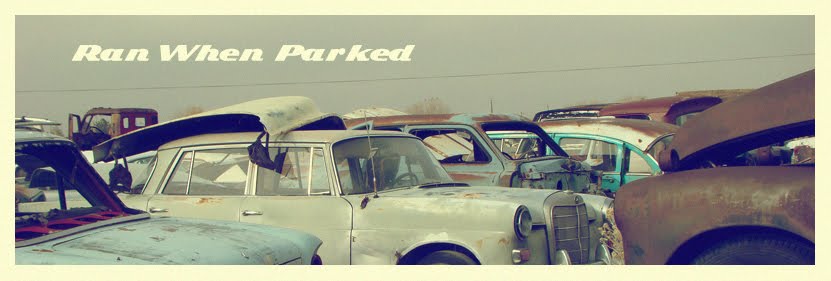Following Ian's example, here's my own list of cars I like but shouldn't.
Sporting a profile slightly reminiscent of an Alfa Romeo Junior Zagato, the CRX was launched as a smaller, sportier version of the Civic. It quickly gained a cult following for its road handling qualities. The addition of the VTEC to the choice of engines was appreciated by those who wanted extra performance.
Pros: fun to drive and good gas mileage.
Cons: clean, stock ones are getting tough to find.
Verdict: I'd own one.
2. International Scout (first generation, 1961-1971)
Designed by International Harvester as a rival to the Jeep CJ series, this Indiana-produced truck was amongst the first batch of SUVs. Some of its powerplants were derived from IH's truck powerplants and they were known for being particularly robust.
Pros: not bad looking for an SUV, more adept for Utah winters than a 25 year old Mercedes diesel.
Cons: I can't imagine IH parts are easy to find.
Verdict: I'd own one and would likely only drive it in the winter.
3. Citroën Visa (1978-1988)

Designed to replace the Ami 8 and the Dyane, it was an overall dull car that people bought to get from point A to point B. They didn't age well and issues were common. My uncle had one and complains about everything from door handles breaking to intermittent starting issues. It did spawn the highly-successful C15 utility vehicle.
On a side note, the base version used an evolution of the 2CV's flat twin displacing 652cc.
Pros: economical, cheap (possibly free) to buy.
Cons: you're not guaranteed to get to your destination with clean hands.
Verdict: I'd own one to tinker with.
4. Trabant (1957-1991)

East Germany's people's car, notorious for its plastic body, its two-stroke engine and the consequent supernova of smoke that follows it whereever it goes. Delivery time for these could sometimes take years but nowadays they're more or less readily available in Germany.
Pros: historic vehicle, novelty of owning a two stroke car.
Cons: lackadaisical acceleration.
Verdict: I'd own one and claim it's a hybrid: it runs on gas AND oil.
5. Lada Niva (1977 - present)

Very little has changed since production started in 1977 and is one of the most basic, eletronics-free new cars you can buy in Europe. It has a loyal customer base in mountainous regions but it's a bit odd to see in cities. These can be ordered new to run on natural gas.
Pros: can probably literally climb up a wall.
Cons: "made in Russia" is very good if you're talking about vodka but not so good if you're talking about cars.
Verdict: I'd own one, provided it's not powered by natural gas.
 Citroën Ami 8 break in Lancon:
Citroën Ami 8 break in Lancon: Seat 131 Panorama in Barcelona, same as a Fiat 131 but built in Spain:
Seat 131 Panorama in Barcelona, same as a Fiat 131 but built in Spain:
 What's left of a Citroën C3 Pluriel:
What's left of a Citroën C3 Pluriel:












 Designed to replace the Ami 8 and the Dyane, it was an overall dull car that people bought to get from point A to point B. They didn't age well and issues were common. My uncle had one and complains about everything from door handles breaking to intermittent starting issues. It did spawn the highly-successful C15 utility vehicle.
Designed to replace the Ami 8 and the Dyane, it was an overall dull car that people bought to get from point A to point B. They didn't age well and issues were common. My uncle had one and complains about everything from door handles breaking to intermittent starting issues. It did spawn the highly-successful C15 utility vehicle.  East Germany's people's car, notorious for its plastic body, its two-stroke engine and the consequent supernova of smoke that follows it whereever it goes. Delivery time for these could sometimes take years but nowadays they're more or less readily available in Germany.
East Germany's people's car, notorious for its plastic body, its two-stroke engine and the consequent supernova of smoke that follows it whereever it goes. Delivery time for these could sometimes take years but nowadays they're more or less readily available in Germany. Very little has changed since production started in 1977 and is one of the most basic, eletronics-free new cars you can buy in Europe. It has a loyal customer base in mountainous regions but it's a bit odd to see in cities. These can be ordered new to run on natural gas.
Very little has changed since production started in 1977 and is one of the most basic, eletronics-free new cars you can buy in Europe. It has a loyal customer base in mountainous regions but it's a bit odd to see in cities. These can be ordered new to run on natural gas.